#aquatab
Explore tagged Tumblr posts
Text
I’m looking at a multi-week trip to a foreign country where my phone won’t work. And my devices are too old to support esim.
I don’t want to do the whole “I know it’s a wonderful opportunity” spiel here, I know I’m being ungrateful. It’s a once-in-a-lifetime trip to a beautiful tropical place. But… I also feel like the whole thing is just gonna be a debilitating 3-week-long school excursion flashback?
I’m essentially using my annual paid leave to grit my teeth for three weeks and risk heatstroke in a place where I can’t drink the water.
Let’s just say it’s… not my ideal holiday.
(Yes, I have a Lifestraw and aquatabs and a well-stocked travel pharmacy and a powerbank with solar panel and copious amounts of bug spray and sunscreen and an all-linen wardrobe -I look like an extra in an Indiana Jones movie- and a travel plug and earplugs and a sleep mask and compression socks for the 17h flight. I’m as prepared as I’ll ever be for this and it doesn’t help.)
4 notes
·
View notes
Text
Everest Base Camp Trek Packing List
Merino (Inner Layer) - 5000 Rs
2. Fleece (Middle Layer) - 1100 Rs
3. Long Sleeve Shirt - 1000 Rs
4. Trekking Pant - 3000 Rs
5. Hiking Pant (Warm) - 1000 Rs
6. Down Jacket (-10 C) - 6600 Rs
7. Socks - 3400 Rs
Quick Dry Trekking Socks - 700 Rs - Trekking till Namche Bazaar
Woolen Socks - 600 Rs - Namche Bazaar onwards
Warm Hiking Socks - 1000 Rs - Wear after Dingboche
https://www.decathlon.in/p/8558643/winter-socks/unisex-woolen-winter-socks-with-merino-wool-silk-2-pairs-grey-sh500?id=8558643&type=p
Merino Wool Socks - 1100 Rs - Wear in the Tea House at night
https://www.decathlon.in/p/8641372/winter-socks/warm-hiking-socks-sh500-mid-2-pairs
8. Backpack - 8000 Rs
https://www.decathlon.in/p/8581388/rucksacks/trekking-bag-5010l-air-mt-500-blue
9. Inners - 1840 Rs
Cotton - 400 Rs
https://www.decathlon.in/p/8574751/shorts/men-s-boxer-cotton-rich-500-black
Synthetic - 360 Rs
https://www.decathlon.in/p/8489345/running-underwear/boxer-de-running-homme-respirant
10. Quick Dry Towel - 600 Rs
Big Towel - 500 Rs
https://www.decathlon.in/p/8816785/nabaiji/microfibre-pool-towel-size-l-85-x-160-cm-dark-grey
Hand Towel - 100 Rs
https://www.decathlon.in/p/8642227/nabaiji/microfiber-towel-size-s-39-x-55-cm-dark-blue
11. Gloves - 1800 Rs
Glove Liner - 900 Rs
https://www.decathlon.in/p/8555763/forclaz/adult-trekking-merino-wool-liner-gloves-mt500-grey
Winter Gloves - 900 Rs
https://www.decathlon.in/p/8562916/gloves-and-mittens/winter-gloves-for-skiing-gl100-waterproof-black
12. Sleeping Bag Silk Liner - 3000 Rs
https://www.decathlon.in/p/8578334/forclaz/silk-sleeping-bag-liner-mt500
13. Rain Poncho - 700 Rs
https://www.decathlon.in/p/8737843/forclaz/hiking-rain-poncho-mt50-grey
14. Neck - 400 Rs
Neck warmer - 200 Rs
https://www.decathlon.in/p/8042436/neck-warmers/winter-neck-warmer-adjustable-black
Neck Scarf - 200 Rs
https://www.decathlon.in/p/8799833/climbing-mountaineering-clothing/neck-warmer-alpinism-grey
https://www.decathlon.in/p/8616258/forclaz/bandana-scarf-mt100-grey
15. Head
Balaclava - 200 Rs
https://www.decathlon.in/p/8040878/neck-warmers/adult-ski-fleece-balaclava-black
Monkey Cap - From local market
16. Head Light - 1000 Rs
https://www.decathlon.in/p/8505682/headlamps-torches/trekking-usb-rechargeable-head-light-120-lumens-hl100-blue
17. Water Bottle - 2600 Rs
Thermos Flask - 1500 Rs
https://www.decathlon.in/p/8734560/quechua/1-l-stainless-steel-isothermal-water-bottle-with-cup-for-hiking-blue
Camel Bag - 1100 Rs
https://www.amazon.com/dp/B08C31CJPL
18. Anti UV Category-4 Sunglasses - 1500 Rs
https://www.decathlon.in/p/8615925/sunglasses/adult-hiking-sunglasses-mh570-cat4
19. Trekking poles - 4000 Rs
https://www.decathlon.in/p/8379457/summer-collection/hiking-pole-anti-shock-500-grey
20. Sunscreen 70+ SPF - 800 Rs
https://www.amazon.com/Neutrogena-Ultra-Dry-Touch-Sunscreen-Spectrum/dp/B005IHT94S/
21. Aquatabs 49 mg - 1300 Rs
https://www.amazon.com/dp/B09B2TVKGB
22. Ziploc Bags (2 Gallon) - 1000 Rs
https://www.amazon.com/dp/B001B331A6
23. Floaters/Sandals - 400 Rs
https://www.amazon.in/gp/product/B0BR2NQGHK
24. Cap - 450 Rs
https://www.amazon.in/dp/B08KT31XGQ
25. Cosmetics -
Face wipes - 150 Rs
https://www.amazon.in/gp/product/B08D437695
Body Wipes - 270
https://www.amazon.in/gp/product/B0BNBX5213/
0 notes
Photo

Water purification is essential after rain due to presence of open system of water in Pakistan and lack of purification at the main city stations. It is essential that you use water purification tablets to avoid any unnecessary health hazards and water-borne diseases like Cholera, Diarrhea and Typhoid. Order world’s number 1 water purification from Call Tanker and stay safe! پاکستان میں پانی کے کھلے نظام کی موجودگی اور شہر کے اہم پمپنگ اسٹیشنوں پر ناقص نضام ہونے کی وجہ سے بارش کے بعد پانی صاف کرناانتہائ ضروری ہے۔ پاکستان میں پانی کے کھلے نظام کی موجودگی اور شہر کے اہم پمپنگ اسٹیشنوں پر ناقص نضام ہونے کی وجہ سے بارش کے بعد پانی صاف کرناانتہائ ضروری ہے۔ یہ ضروری ہے کہ آپ پانی صاف کرنے والی گولیوں کا استعمال کریں تاکہ کسی بھی غیر ضروری صحت کے خطرے اور گندے پانی سے پیدا ہونے والی بیماریوں جیسے ہیضہ، اسہال اور ٹائیفائیڈ سے بچا جا سکے۔ کال ٹینکر سے دنیا کا نمبر 1 پانی صاف کرنے کا آرڈر دیں اور محفوظ رہیں! Website: www.calltanker.com . #watertankerservice #calltanker #watertankerinkarachi #watertanker #waterpurification #waterpurificationtablets #waterbornedisease #waterbornediseases #aquatab #coronavirus #watershortage #waterinkarachi #watertankersupplier #watertankerapp #waterdelivery #potablewater #potablewatertanker #digitalpakistan #worldbank #savewater #globalwarming #indusriver #waterconservation #watertanker #trucks #tanker #pakistan #cashlesssociety #typhoid #cholera #dysentry https://www.instagram.com/calltanker/p/CYCLMJtNi6G/?utm_medium=tumblr
#watertankerservice#calltanker#watertankerinkarachi#watertanker#waterpurification#waterpurificationtablets#waterbornedisease#waterbornediseases#aquatab#coronavirus#watershortage#waterinkarachi#watertankersupplier#watertankerapp#waterdelivery#potablewater#potablewatertanker#digitalpakistan#worldbank#savewater#globalwarming#indusriver#waterconservation#trucks#tanker#pakistan#cashlesssociety#typhoid#cholera#dysentry
0 notes
Photo

If you haven't seen my review of this, check out my YouTube channel (Gun Porn and General Awesomeness) and then make sure to get one for yourself. Everyone should have one of these in their kits! @Regran_ed from @gy6inc - The #GotYourSix #Survival mag is unlike anything else on the #market. We combined a versatile #survivalkit with a 10 round 50 state legal #ar15 #magazine ! #ucomatches #aquatabs #guns #stockingstuffers #Christmas #holiday #shoppingonline #need - #regrann https://www.instagram.com/p/Bq-gKNTnd99/?utm_source=ig_tumblr_share&igshid=tb8bpwgivm0v
#gotyoursix#survival#market#survivalkit#ar15#magazine#ucomatches#aquatabs#guns#stockingstuffers#christmas#holiday#shoppingonline#need#regrann
1 note
·
View note
Text
announcement !

back to original navi post
(advanced) merry christmas ! 🎄 i know i havent been active as of late 😬 but turns out ive been busy for the holidays
speaking of, a typhoon hit my country pretty recently. im lucky to not have been majorly affected, but for others, that isnt the case. unfortunately, the holiday merriment doesnt magically solve hunger and need in the affected communities. in line with this, my family and i in Rotary have organized a call for donations, and if youre in the philippines, i hope your families are doing well this christmas weekend and i encourage you guys to donate if you can! tis the season of giving after all 🎁
ill list down the details below the cut. i didnt want to publicly post our addresses and bank details on this blog, so if youre interested in donating, send me a message on here or over on my main @dora-the-grownup so that i can direct/guide you properly !!
ACCEPTING DONATIONS FOR GUIMARAS UNTIL DEC. 29
IN-KIND DONATIONS
*Drop-off points in Luzon (Taytay, San Juan, BGC, Parañaque, and Muntinlupa)
Canned food
Blankets
Toothpastes
Toiletries
Basic medication, Aquatabs
Feminine Napkins
Diapers
MONETARY DONATIONS
*all monetary donations will be used to purchase relief goods
Gcash
Metrobank
BDO
BPI
we wont be able to get the donations to guimaras until we have collected a sufficient amount of relief goods to fill up the boat or plane (whichever it may be depending on our contacts in the philippine navy), so once again i am encouraging everyone to take part in donating for guimaras !
again, i didnt want to publicly post addresses and bank details on this blog, so if youre interested in donating, send me a message on here or over on my main @dora-the-grownup so that i can direct/guide you properly :) thank you !
#unfortunately i have no way of accepting international donations but its a big help boosting this post !!#OdettePH#signal boost#philippines
46 notes
·
View notes
Text
Hiking the Salkantay Trail to Machu Picchu
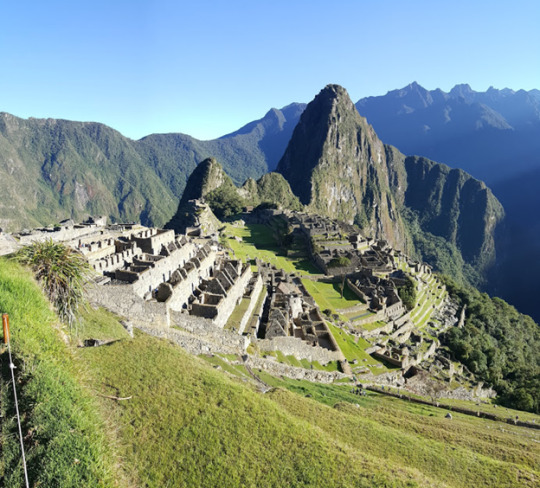
The Salkantay Trail is a popular alternative to the Inca Trail to reach Machu Picchu. It is roughly a 37 mile long trail which takes about 4 days to arrive at the famous ruins. This trail takes you through the rugged beauty of Peru from the snow capped mountains down through the rainforest below. However, those who want to follow in the footsteps of this ancient path should read on to ensure you are prepared for the challenges and that you don’t miss out on some of the greatest experiences this hike has to offer.
Why choose the Salkantay?
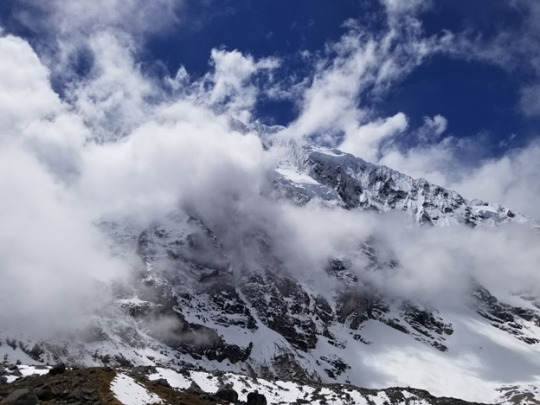
For budget backpackers, there is no better option than the Salkantay to get to Machu Picchu. While the Inca trail is the most famous, it is restricted due to high demand. Not only do you need a permit, but it must be obtained several months in advance and having a guide is required. For the Salkantay, there are no permits required and no fees to use the trail. It is free to set up tents along the trail though if you wish, there are several houses along the way that will let you camp in their yards for a small fee. These places also offer food! You have much more freedom on the Salkantay to choose your own pace, stop at different spots along the way as you wish, and even take slightly different routes depending on your preferences. Perhaps the most important consideration for the Salkantay is that it is raw beauty like you haven’t seen before. You will be able to admire the marvel of the icy “Savage Mountain” and just a day later admire the wild flowers of the rainforest.
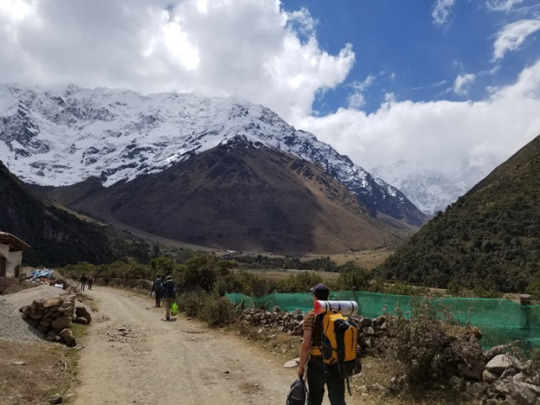
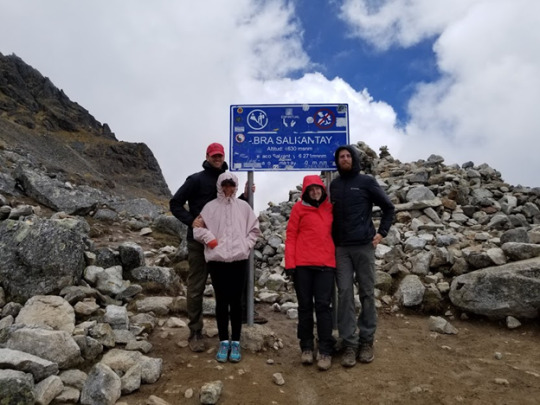

Recommended Equipment
You can check out our recommendations on how to pack for a mutli-day hike.
The Trail
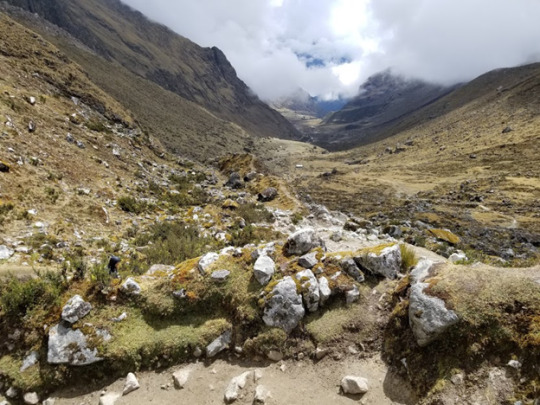
The trail itself is well marked and easy to follow. There are a couple of points where you can choose different paths to go down, but either mapping your route beforehand or talking to other travelers should get you going in the right direction. This trail also has several small villages and houses along it, making it easy to make pit stops for food or to camp for the night. All of the locals that we met along the way were extremely friendly people and they made delicious food for cheap. There are also several streams and waterfalls along the trail where you can refill your water bottles. Just make sure you always fill up where the water is running and make sure you have some sort of water treatment system like Aquatabs or a LifeStraw.

Things to remember if you hurt yourself on the trail
A hike is not without risks or challenges, but they are no reason to be discouraged. Our group happened to run into a scenario where one of our members twisted an ankle halfway through the hike, effectively making us progress slower than expected. From the small village of Chaullay (below) we managed to secure travel for our friend to capac nan; a coffee farm and our next destination. Throughout this whole process we trusted the Peruvian locals with the responsibility of our friend and they were more than hospitable, even providing first aid and refreshments! So don’t be afraid to befriend some locals while you are here!
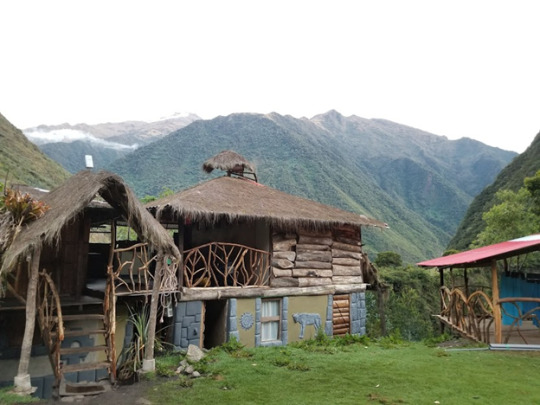
Spots of Interest
Humantay Lagoon
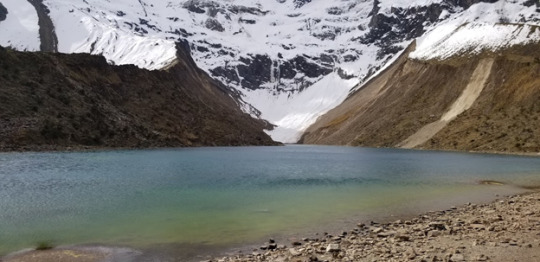
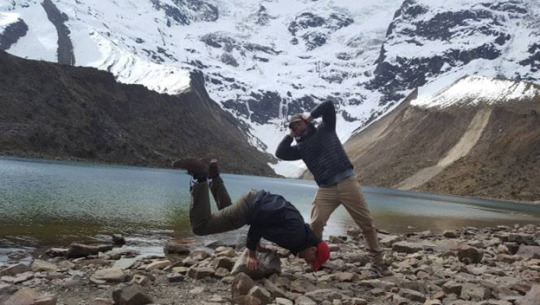
Toward the start of the trip, just above all of the camps lies an offshoot of the trail that leads to the Humantay Lagoon. This is a small lake fed by the mountain runoff and is a beautiful spot for pictures. However, the trail up to it is quite steep and is longer than it looks. For our crew, this small hike was the litmus test for who was going to be affected by the altitude, as this is above 11,000 ft elevation. More on dealing with elevation later on.
Coffee Farms
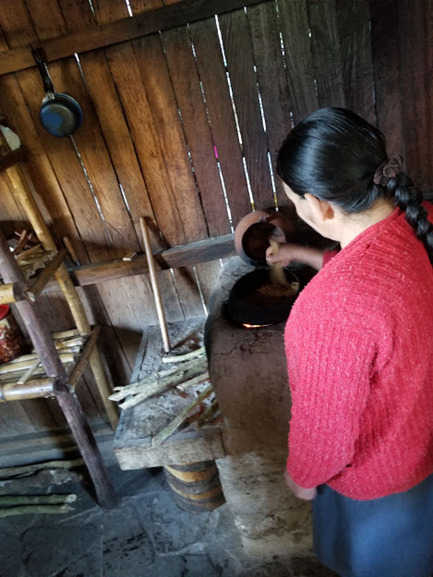
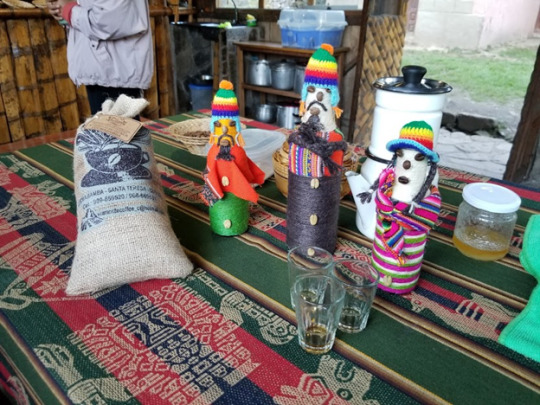
While hiking the Salkantay, we noticed that several of the locals had huge piles of white beans drying out on tarps beside the trail. It wasn’t until our last full day of hiking that we realized these were coffee beans as they are plentiful in the area. During one of our stops, the owner of the property where we set up our tents also worked on a coffee farm. He invited us to the farm when we got up the next morning, which was on our way up the trail. He showed us their entire process from harvesting the beans from the fruit to grinding the beans to brewing the coffee. We even scored some coffee liqueur at the end. This was a wonderful experience and also a small glimpse into the local lifestyle.
Hot Springs
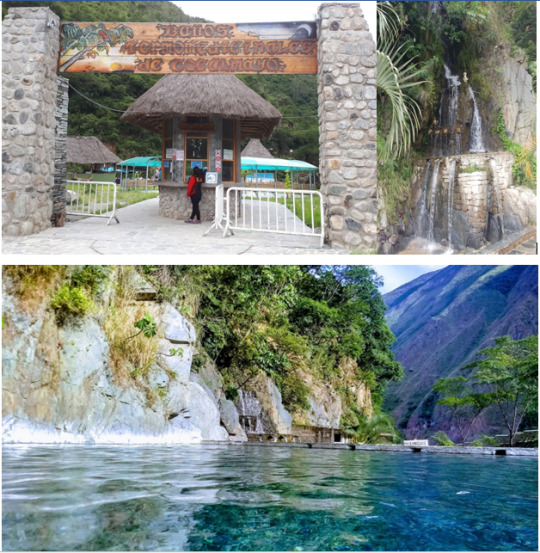
There had been a silver lining to our friend who was injured earlier in the hike. We had to split up the group which resulted in two entirely different experiences. The first group continued on to Llactapata, a steep mountain, and the second group took a ride to the Aguas Termales de Cocalmayo hot springs in Santa Teresa. You can make a guess as to which group had the injured person in it. The hot springs were unlike anything else we had experienced on the trip. There were natural flowing waters, canopy tops, paved floors, it's as if we arrived at a tropical hideaway. (Photos above courtesy of google as we were too relaxed to lift a finger.)
Llactapata
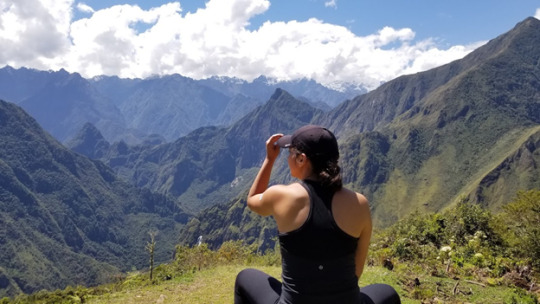
After a high energy morning hike which brought us up and over another mountain, we arrived at Llactapata. This place has one of the most breathtaking views in the world. Situated in a clearing on the side of a mountain, it gives you a vantage point to see both green and snow capped peaks from miles around, a waterfall below, and with a good eye and a clear day, you can spot the ruins of Machu Picchu in the distance for the first time. Pictures do not do it justice, but it was a great morale booster for our group and a wonderful spot to stop and rest in the middle of the day. Llactapata is also known for its own ruins which you can explore at your leisure or even camp at.
Things to Plan Head
As with any adventure, a little preparation will go a long way in making sure you have the best experience possible with minimal inconvenience. Here are a few things to do ahead of time so that your Salkantay hike is the best it can be.
Purchase Machu Picchu Tickets - You need to purchase tickets ahead of time in order to get access to the famous ruins of Machu Picchu. These can go fast so you will need to do this part several months beforehand. You can choose just exploring the ruins, the ruins and hiking Machu Picchu mountain, or the ruins and Hiking Huayana Picchu mountain (the one that is in all of the pictures). I found the cheapest way to get these tickets when booking as individuals and not a tour group, is directly from the government website. This website is quite dated and in Spanish, so we will soon be posting a step-by-step guide of how to book your tickets. Make sure you give yourself at least 5 days between arriving in Cusco and going up Machu Picchu. You do not want to miss your day at the ruins because you didn’t get through the trail quickly enough!
Route & amount of distance per day - Make sure to plan out your exact route along the Salkantay. This can be done along the way, but is much easier to do before you are on the trail without cell service. There are several maps that can be printed off (we don’t spend money on tourist maps!) and many of them have recommendations of stopping points for each day to keep you on track and make the most of your experience.
Your fitness - Hiking the Salkantay is not an easy feat. Our group consisted of experienced hikers and it was certainly challenging for each of us. You are hiking for roughly 9 hours a day several days in a row all while carrying a 30lb pack. This will test your body. Do practice hikes around your local area in the months leading up to the trip. Preferably with a pack to get used to the extra weight.
Get ready for the altitude - Altitude sickness sucks. In our group, half of us were affected by altitude sickness and half were not. It really varies and there is no way to guarantee that it will not affect you. In fact, with the highest point of the pass at 15,000 ft, it will likely affect you in some way. The best thing you can do is try to acclimatize slowly. Cusco sits just over 11,000 ft and is usually the starting point for people doing the Salkantay Trail. If you can, give yourself a few days in Cusco before you start hiking. It is a beautiful little city to explore and it will give you some time to get used to the thin air before you start doing strenuous activities. There are also medications that can be purchased or prescribed to help avert these affects. Finally, there is mate de coca, or coca tea, which is sold all around the area. For generations, the coca leaves have been used to ward off the effects of altitude sickness and they are still used today. I can personally vouch for this one, as I was hit hard by altitude sickness my first day on the trail. However, each morning I would have my coca tea, then would chew on the leaves as we started our hike for the day and it really did wonders for me.
Test your equipment - So you have made sure you have everything you need for this hike. But how do you know it will hold up during your adventure? You need to test your equipment before taking it on such a journey.
1. Tent - Take out your tent and make sure it is waterproof. We used a sealer for the seams of our tent as well as Kiwi’s waterproof spray for the tent overall. We then tested it using a water hose to simulate a steady rain and the inside stayed perfectly dry. Also, remember to have a tarp underneath your tent. Getting wet from underneath is just as bad!
2. Pack - You should also test out your hiking pack to not only make sure it has good comfort and utility, but most packs also have rain covers that should be tested beforehand. The same thing goes for rain jackets and water repellent hiking pants.
3. Boots - Your boots are probably your most important equipment. You need to make sure they are form fitting. Too small will give you excess blisters and pain, too large let your feet slide around and greatly increase your chance of twisting an ankle. You also need to make sure your boots are broken in. While buying brand new boots for a hike sounds exciting, it is a quick way to destroy your feet. You need boots that have already formed to your foot shape and that are still comfortable and reliable after several wears.
Main things to remember on the trail
Rise with the sun - get up as soon as there is some light so that you can break down camp and get ready to hike. This way you make sure you have the most amount of daylight possible for hiking. Believe me when I tell you that it is vastly more difficult to hike in the dark even with good headlamps. There is a higher likelihood of straying off trail and getting lost. Get up early and this won’t be a concern.
Slow and steady - Like the proverbial tortoise, slow and steady really does win this race. Since you started first thing in the morning, relax and don’t push yourself too hard. Remember, the purpose is to enjoy your hike and take in the beauty around you. Keep a nice, steady pace and the miles will melt away. Keeping this pace will also help protect you from injury. Every single injury I have seen during a hike has come from a fatigued hiker who was trying to push their bodies too much. Make sure to take breaks when needed and drink plenty of water.
Drinking water - For multiple day hikes like the Salkantay, you need water and lots of it. However water is heavy. You can’t carry all that you need with you, so you will need to fill up along the way. The most important things to remember are not to get your water from stagnant pools and to treat the water. The Salkantay has a lot of waterfalls and rivers so finding a source of running water will not be hard. You could also ask to get water from the locals, but there is no guarantee that is any safer than getting it from the streams.
Hidroelectrica
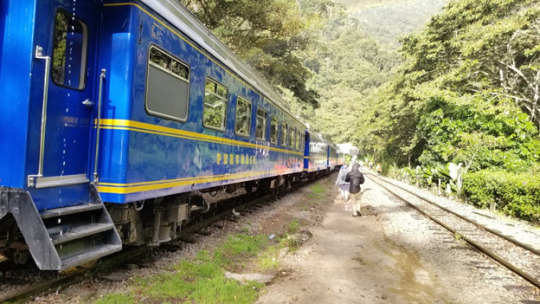
The hike through the Salkantay eventually brings you to Hidroelectrica. This is really a train stop turned small village. Here people can continue to make the trek to Aguas Calientes at the base of Machu Picchu, or they can opt to take the train the rest of the way. The train is pricey, however, and this is only a half day hike from Aguas Calientes. Besides, you want to be able to say you HIKED all the way to Machu Picchu! We decided to stop in Hidroelectrica for lunch, then trekked the rest of the way. We also knew we would only be at Augas Calientes/Machu Picchu for one day so we decided to leave our hiking packs with the owner of the restaurant where we had lunch and opted to take our day packs the rest of the way. The nice thing about the rest of the hike is that even though it’s about 12km it is almost completely FLAT. That combined with having almost no weight to carry meant a much faster hike.
Where to stay in Aguas Calientes
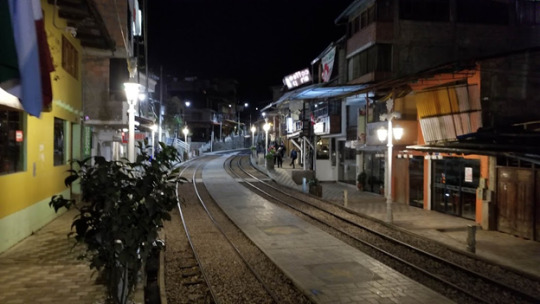
The town at the base of Machu Picchu is remote and picturesque. However, because this is such a highly trafficked tourist destination, the town has prices to match. As you hike into Aguas Calientes, you come in from the downhill side. The very first hotels you come across are large and ornate, rivaling the fancy hotels of large cities. Here is where you will see the older tourists. Here is where you will be received with a welcome in English. And here is where you will spend several hundreds of dollars per night. However, the farther up the hill you go, or if you go to the buildings behind the main street, the hotels and hostels get significantly cheaper. You may need to brush up on your Spanish a little, but we were able to negotiate a deal for our crew for less than 1 tenth the cost of the hotels at the bottom. Especially after 4 days of hiking and camping, a clean bed and a hot shower was more than enough for us!
When you are at Machu Picchu
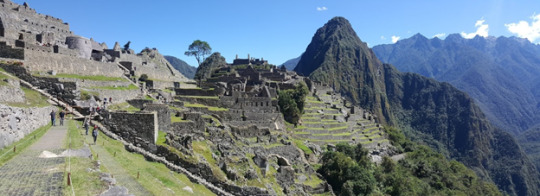
The entire trip has built to this moment. You climb the switchbacks to the top of the mountain and there you are...in front of the gates amidst a sea of people with no ruins in sight. There are 3 things that I recommend you do first
Go to the bathroom - This will be your last chance until you come out of the site and it’s actually quite difficult to get back in once you come out. Get it done now and then enjoy Machu Picchu for as long as you can.
Get a Spanish speaking tour guide - This is one area where we splurged. To get the knowledge of someone who truly knows the site was well worth it. We were able to learn a lot of the history of this famous site with our guide and once the tour was done, we still had time to explore for ourselves. She also helped us get through the gate quicker and showed us some of the best spots to take pictures. Also, if you get a Spanish speaking guide, it is cheaper than getting an English speaking guide. Our guide actually spoke both which worked out great for us because she gave us a tour in English but at the lower price!
Get in line - It takes a little while to get through the gates and into the site. Make sure you are ready so you can get right in and enjoy your time at Machu Picchu. Your guide can help expedite this process.
Once you are inside, get as many pictures as you want, explore the ruins, watch the llamas, and marvel at the architecture built into this mountain. One thing that I loved about Machu Picchu is that while it is quite touristic, each group has a set time slot. It gives you plenty of time to explore while also giving you enough space to truly enjoy it and to get beautiful pictures without people constantly blocking your way. On your way out of the site, remember to stop by the stand where they have the special Machu Picchu stamp for your passport! It is a wonderful memento to have.
1 note
·
View note
Video
youtube
In Yemen Cholera became an outbreak on April 27. Since then, more than 400.000 suspected cases of Cholera were recorded with nearly 2.000 associated deaths. Vision Hope International has been on the field since 2002. Our work has focused also on rehabilitating clean water resources through the IWRM - Integrated Water Resources Management. Part of the IWRM are also the projects for distribution of life saving silver based water filters and Hygiene Kits. Now, with the threat of Cholera turning into an epidemic, the efforts for saving lives needed more input and we are now distributing enhanced Hygiene Kits better suited for Cholera prevention. The more recent kits include: - Aquatab, sodium dichloroisocyanurate (NaDCC), 33 mg tablets - Pack with 50 tablets; - Bar of bathing soap, branded, non-perfumed, non-allergic, 75g; - Jerrycan, noncollapsible, made of food safe plastic (10-20 liters), white; - Washing powder, concentrated, 2 kg; - and a better Water Filter (silver based filter) First Unicef (2.500) and now Tearfund (1.800) have donated for the Cholera Hygiene Kits. While the ones from IWRM were supported by the BMZ from Germany. We must note too, that also this ones are an extraordinary way to prevent Cholera not only for the hygiene purpose and education which followed, but also because they were in many cases distributed along with silver water filters. In this version, the Hygiene Kits included tooth paste and tooth brush for oral hygiene. The best way to support our work is by donating. But we will really appreciate and be thankful if you just share this video, join our facebook or visit our website and decide to let your network know about our work. Thank you very much! - Choose here where your donation goes: https://vision-hope.org/donate/ - Subscribe to our Newsletter: https://goo.gl/kFcGTc - Find us on Facebook: https://www.facebook.com/VisionHopeInt/ - Follow us on Twitter: https://twitter.com/VisionHopeInt - Join us on Instagram: https://www.instagram.com/visionhopei... - Visit our website: https://vision-hope.org/ - Read our articles on Medium: https://medium.com/@visionhopeint _________________________________________________________________ Music: Ragnar's Kingdom by Scott Holmes. http://freemusicarchive.org/music/Sco... under Creative Commons Attribution-NonCommercial License.
#unicef#tearfund#yemen#aquatab#water filter#hygiene kit#germany#humanitarian aid#humanitarianrelief#humanitarianaid#worldhumanitarianday#who#wfp#united nations
0 notes
Text
Foraje Puturi Giurgiu
Atunci cand decideti tipul de put, luati in considerare cantitatea de apa de care aveti nevoie pentru consum si regularitatea consumului de apa. Decalajul dintre inelele fantanii este o modalitate prin care apa murdara, saturata cu materie organica sa poata intra din straturile fertile superioare ale solului. Mai mult, daca primele doua medicamente sunt mai concepute pentru ciclul pregatitor, adica pentru spalarea tuturor suprafetelor sondei cu dezinfectarea lor simultana, atunci Aquatabs deja dezinfecteaza profund apa in sine Vopsirea tehnologiei, precum si dozarea utilizarii acestor compusi nu are prea mult sens. Daca se alege metoda de foraj cu ciocan cu cablu, atunci aceeasi trebuie monitorizata pentru adancimea de penetrare si gradul de umplere a paharului de foraj sau alezaj cu namol. . Forajul cu miez Tehnologii, in principiu, coboara cu gaurire, cu toate acestea, partea de taiere a burghiului are un dispozitiv complet diferit.
Este necesar sa se calculeze volumul de apa la un nivel static (o fantana umpluta inainte de inceperea admisiei). Aceasta optiune nici macar nu este luata in considerare, deoarece este putin probabil sa fie suficienta chiar si pentru nevoile interne. Este extrem de neprofitabil sa produci sau sa achizitionezi singur astfel de echipamente de foraj pentru a gauri unul sau doua puturi din zona ta .
Cineva considera ca aceasta tehnologie este foarte eficienta si, ceea ce este important, rapid si inodor. In mod natural, bea o astfel de apa fara tratament este extrem de periculos. Este important ca apa sa fie luata din put dintr-un punct care nu ajunge la filtrul de fund echipat. Cert este ca orice fantana, chiar si cea mai echipata, ramane in continuare foarte vulnerabila la o serie de factori externi negativi care afecteaza direct calitatea apei. Este mai bine sa utilizati serviciile unei organizatii care inchiriaza astfel de truse pentru inchiriere - nu va fi dificil pentru rezidentii locali sau vecinii dintr-o casuta de vara sa clarifice disponibilitatea unor astfel de firme.
Ei bine, dupa dezinfectare, dupa aproximativ doua saptamani, devine pur si simplu obligatoriu. Principala caracteristica a puturilor detaliate este necesitatea invelisului lor in timpul prelevarii de sol. Inainte de a umple shungitul, este necesar sa-l clatiti sau, alternativ, sa-l umpleti si sa nu folositi putul de ceva timp (aproximativde ore), astfel incat praful de schungit sa se aseze pe fund. Cu toate acestea, trebuie inteles clar ca nimeni nu poate garanta o lovitura exacta asupra acviferului. Din fantana, apropo, este, de asemenea, destul de posibil sa se organizeze un sistem aproape complet automatizat pentru furnizarea apei la punctele de consum din locuinta permanenta a familiei. Uneori, serveste ca sursa temporara pana cand se ia o decizie asupra unui put de capital. Nu reactioneaza chimic cu apa, ceea ce este bun.
De regula, o umbra caracteristica intunecata, pana la aproape neagra, apare aproape de apa, un strat de spumare plutitor este posibil. Exista standarde foarte stricte pentru aranjarea corecta reciproca a instalatiilor de alimentare cu apa si de canalizare. In ceea ce priveste stejarul, este puternic si durabil, dar la inceput apa datorita acestuia va avea o nuanta maronie. Este un silicat de aluminiu-sodiu, are o culoare verzuie, ca culoarea jadului.
De exemplu, in gama de produse a grupului de companii Penetron-Rusia, puteti gasi compozitii pentru etansarea defectelor, pentru impermeabilizarea continua a acoperirii godeurilor si chiar pentru blocarea fiabila instantanee a unei scurgeri printr-o gaura (beton) din beton. Puturi pentru apa - ce metode pot fi forate? Sa facem cunostinta cu materialele care pot fi utilizate la aranjarea filtrului de jos. Daca doriti sa gauriti mai adanc, intrebati expertii cat costa o astfel de munca si veti fi placut surprinsi, deoarece forajul independent al unui put adanc va costa mult mai mult. O solutie de inalbitor poate fi aplicata la suprafata cu un spray, perie- deoarece va fi convenabil.
1 note
·
View note
Text
Nước giếng khoan là gì?
Nước giếng khoan được hiểu ngắn gọn là nguồn nước ngầm ở rất sâu trong lòng đất. ngoài ra, lúc con người khai thác trong khoảng mặt đất xuống các nguồn nước ngầm, trong khoảng ấy mà xuất hiện nguồn nước giếng khoan.
Nguồn nước ngầm là nguồn nước khi không trên mặt đất thấm qua và chảy xuống lòng đất đi qua các lớp trầm tích và xuất hiện nước ngầm.

Nước giếng có tốt không
Sự vững mạnh công nghiệp hóa, hiện đại hóa thành thị khiến môi trường khí quyển, môi trường nước xuống cấp nặng.Chúng ta có thể thấy rõ nhất hiện tượng ô nhiễm ở ao, hồ, sông suối, các nguồn nước ngầm được coi là trong sáng trong sạch hiện giờ cũng bị biến đổi tính chất tất cả.
Nước giếng khoan trong thời đại ô nhiễm cất phổ biến tạp chất độc hại: hóa chất, hợp chất hữu cơ độc hại, kim loại nặng… làm tính chất hóa học bị biến đổi và mang mối tiềm ẩn tới sức khỏe con người.

Trong nước giếng khoan mang cất các gì
– Những hóa chất, hợp chất hữu cơ
–Vi khuẩn
– Kim khí nặng
– Nitrit, amoni
– Nhiễm mặn, nhiễm phèn
– Đá vôi
Ô nhiễm nước giếng khoan có những loại nào
Nước nhiễm mặn
Ở nước ta hiện giờ diện tích nước nhiễm mặn đang càng ngày càng tăng và phổ thông nhất ở ở vùng đồng bằng sông Cửu Long và duyên hải miền Trung.
Nước nhiễm phèn Nước giếng khoan bị nhiễm phèn hay còn gọi là nước nhiễm phèn là nước bị nhiễm những kim loại nặng như sắt, nhôm, chì,... mang màu vàng đục, sở hữu cặn lửng lơ (hoặc màu cam), mang mùi tanh, khi nếm thì sở hữu vị chua và dễ bám màu vẩy đục trên mọi bề mặt, đồ đạc.
Nước nhiễm kim khí nặng
Với nhiều xuất xứ dẫn đến nguồn nước ngầm, nước giếng khoan của bạn bị nhiễm kim khí nặng như là: do hoạt động khai thác những quặng kim khí nặng, những chất thải công nghiệp vào môi trường đất và nước, kim khí nặng với trong những lớp trầm tích mà nguồn nước ngầm chảy qua.

Cách thức xử lý nước giếng khoan?
Xây bể lọc
Bể lọc là phương pháp lọc nước sinh hoạt truyền thống và được sử dụng rộng rãi từ trước đến nay. Nguyên lý hoạt động của bể lọc dựa cơ chế tự lọc sinh vật học.
Hệ thống lọc được xây gồm với 3 ngăn: lắng, lọc và đựng. những tầng lọc tiêu dùng nguyên liệu đơn thuần, dễ kiếm, ít tốn kém như: cát các loại kích thước lớn - nhỏ, than hoạt tính và sỏi.
Xây dựng bể lọc thường được ứng dụng ở nông thôn, các nhà mang đất đai diện tích không gian rộng. Bạn có thể chủ động xây bể lọc có dung tích phù hợp với nhu cầu lọc nước giếng khoan.
Cho đến nay, phương pháp này vẫn được xem là một trong những phương pháp lọc nước giếng khoan giá thấp và tương đối hiệu quả.

Xử lý bằng hóa chất
Nhiều hộ gia đình không có điều kiện hoặc không đủ không gian để ứng dụng công nghệ lọc nước giếng. Hoàn toàn mang thể nghĩ tới phương án dùng hóa chất. rộng rãi nhất ngày nay là hóa chất vô trùng nước giếng Cloramin B. loại hóa chất này được đóng gói mang rộng rãi hình thức khác nhau. Rất tiện dụng cho người tiêu dùng, tùy thuộc vào lượng nước cần xử lý mà chúng ta đưa ra chọn lựa khác nhau.
Thí dụ như nếu như thể tích nước giếng cần xử lý với thể tích nhỏ như: chum, vại, chậu, xô…. Chỉ cần sử dụng cloramin B dạng viên 0.25g hoặc gói bột Aquatabs 67mg. Theo liều lượng như sau: 0.25g tiêu dùng đủ cho 25 lít nước giếng; một gói bột 67mg tiêu dùng đủ cho 20 lít nước.
Nguồn: https://vannhapkhau.com.vn/nuoc-gieng-khoan-la-gi-nuoc-gieng-khoan-co-uong-duoc-khong.html
0 notes
Text
L’UNICEF réaffirme son engagement à accompagner la région de Zinder

Par Binta Saley Souley. Du 17 au 18 juillet 2018, la Représentante de l’UNICEF, Dr Félicité Tchibindat, a effectué une visite de travail dans la Région de Zinder. L’objectif est de discuter des défis et des opportunités dans la région – relatifs à la promotion et la protection des droits de l’enfant. Les questions liées au mariage des enfants, à la scolarisation des filles, à la jeunesse, aux urgences humanitaires et à la décentralisation ont été abordées au cours des séries de rencontres faites avec les différents acteurs au niveau régional.

Du 17 au 18 juillet 2018, la Représentante de l’UNICEF, Dr Félicité Tchibindat, a effectué une visite de travail dans la Région de Zinder. L’objectif de sa visite est d’une part de prendre contact avec les autorités administratives et coutumières et d’autre part de discuter des différentes problématiques qui affectent le développement et les droits des enfants. Il s’agit des questions aussi importantes que celles relatives au mariage précoce, à la scolarisation des jeunes filles, à la jeunesse ainsi qu’à la décentralisation et à la démographie qui constituent un défi majeur pour cette région.
« Nous sommes à vos côtés pour adresser ensemble les problématiques liées à l’éducation notamment la scolarisation de la jeune fille au mariage des enfants et à la jeunesse. Nous allons également accompagner la décentralisation pour que les services décentralisés puissent jouer leur rôle d’acteurs de développement et de coordination avec d’autres partenaires » a déclaré Mme Félicité Tchibindat au cours de son entretien avec le Gouverneur de la région de Zinder, Mr M. Issa Moussa.
Dans la même optique, Monsieur Issa Moussa a tenu à préciser que sa région est à pied d’œuvre pour réduire le taux de chômage de la jeunesse à Zinder. « Nous essayons d’assurer la prise en charge des jeunes ayant abandonné les bancs de l’école très tôt en créant des centres de formation professionnelle adaptés » a-t-il mentionné tout en rappelant tous les efforts entrepris par le Président de la République Mahamadou Issoufou dans ce cadre.
«Nous apprécions les efforts de l’UNICEF dans le soutien constant apporté aux chefs traditionnels et religieux dans leur combat en faveur de la scolarisation de la jeune fille. Dans ce domaine, des progrès importants ont été enregistrés : le taux de scolarisation de la jeune fille dans la région de Zinder est de 32%. Le Président de la République attache une importance capitale à la scolarisation de la jeune fille, à la formation professionnelle des jeunes et au traitement d’urgence de la question cruciale de la fécondité », a souligné le Gouverneur.
La Représentante de l’UNICEF a saisi l’occasion pour faire un don de 5 cartons de 80,000 comprimés de Aquatab, et 105 paquets de 240 sachets de pure destinés à la Direction Régionale de l’Hydraulique dans la lutte contre l’épidémie de choléra et aussi 5,000 sachets de SRO et 1000 paires de gants destinés à la Direction Régionale de la Santé Publique. Le Gouverneur a vivement remercié et apprécié la collaboration fructueuse entre l’UNICEF et sa région tout en instruisant ses services administratifs à poursuivre la réflexion sur les défis de la région.

Mme Félicité Tchibindat a rendu une visite de courtoisie à l’honorable Sultan du Damagaram son altesse Elhadj Aboubacar Oumarou Sanda où elle a tenu à remercier le partenariat efficace et stratégique avec la Chefferie traditionnelle du Niger.
« Nous saluons vivement l’engagement de la chefferie traditionnelle, qui a pris le problème à cœur et fait le plaidoyer et la sensibilisation des populations sur l’importance d’inscrire les filles à l’école et de veiller à leur réussite académique. En effet, la réussite académique de la jeune fille lui sera d’abord utile dans sa vie quotidienne, ensuite dans celle de sa famille, de sa communauté et de son pays tout entier. Par conséquent, on ne saurait permettre que la moitié de la population d’un pays soit laissée de côté dans le combat pour le développement », a affirmé Félicité Tchibindat lors de son entretien avec le Sultan.
« Le Niger a besoin de toutes les forces vives, de tous ses enfants pour avancer. C’est un pays qui dispose d’une force importante de travail, d’atouts, d’opportunités et de potentialités. Les changements seraient spectaculaires si toutes les filles vont à l’école en bénéficiant d’une éducation de qualité et en faisant en sorte que tous ceux qui sont hors du système scolaire aient des opportunités. Le Niger peut et doit le faire pour les enfants, qui seront les dirigeants de demain » poursuit Félicité Tchibindat.

Elle a poursuivi sa série de visites au Conseil Régional de la région de Zinder et avec les différents directeurs régionaux afin de s’enquérir et d’échanger des défis majeurs qui affectent la région de Zinder. La contribution à l’amélioration des conditions d’accès des filles à l’école, et le maintien dans le système éducatif est déjà un des axes majeurs du programme de coopération Niger/UNICEF en cours et il figurera dans les priorités du prochain cycle de programme 2019-2021. «
Cette visite a été une opportunité de faire un plaidoyer envers les autorités sur les questions relatives à la jeunesse et l’adolescence si on doit s’aligner au contexte des Objectifs du Développement Durable (ODD). C’est dans ce sens qu’elle a indiqué que « nous n’atteindrons pas les objectifs ambitieux fixés par les ODD si nous ne parvenons pas à adresser les besoins des jeunes et des adolescents. ».
Pour témoigner l’engagement de son Institution à la promotion de l’enseignement professionnel et technique et l’enseignement non-formel, elle a visité le foyer féminin mis en place par la Région avec l’appui de l’UNICEF qui accueille plus d’une centaine de filles réparties à divers niveaux. La plupart d’entre elles ont vécu des violences de tout genre (violences domestiques, abus sexuel, mariage des enfants, épouses abandonnée, situation familiale précaire) avant de se faire intégrer dans ledit centre pour un apprentissage ou pour se lancer dans des activités génératrices de revenus. Une visite de courtoisie a été également effectuée par la Représentante à l’équipe du Système des Nations Unies à Zinder où elle a échangé avec ses collègues sur la reforme des Nations Unies et la synergie entre les agences pour appuyer le Gouvernement du Niger.
Félicité Tchibindat a terminé ses visites par une conférence de presse à laquelle les journalistes ont eu l’opportunité de poser toutes les questions qui peuvent leur permettre de connaitre l’ambition de la Représentante sur le nouvel agenda 2019-2021 qui concerne les différentes problématiques liées aux droits des enfants, des adolescents et des jeunes dans la région de Zinder.
4 notes
·
View notes
Photo

Water purification tablets available on Call Tanker. Make your water safe from disease causing bacteria 🦠 Your health is in your hands! Place order on ; www.calltanker.com #safewater #cleanwater #waterpurification #waterpurificationtablets #who #sdg6 #worldbank #aquatab #watertankersupplier #watertankerservice #waterforall #watercrisis #savewater #globalwarming #indusriver #waterconservation #watertanker #trucks #tanker #cashlesssociety #digitalpakistan #naegleriafowleri #microorganisms #safewater https://www.instagram.com/p/CW-kpuptTg3/?utm_medium=tumblr
#safewater#cleanwater#waterpurification#waterpurificationtablets#who#sdg6#worldbank#aquatab#watertankersupplier#watertankerservice#waterforall#watercrisis#savewater#globalwarming#indusriver#waterconservation#watertanker#trucks#tanker#cashlesssociety#digitalpakistan#naegleriafowleri#microorganisms
0 notes
Link
0 notes
Link
0 notes
Text
7 Tips for Climbing Kilimanjaro

Mount Kilimanjaro Congratulations, you’ve decided to climb Mount Kilimanjaro, and now you are wondering how to ensure you make it to the roof of Africa. To increase your likelihood of getting that coveted photo of yourself on top of Uhuru Peak, here are seven tips that can help you reach your goal! 1. Gear up. While climbing Kilimanjaro, it is of the utmost importance to make sure you have the right gear. One of the essential items for your climb is a pair of waterproof boots that have been broken in on your long training hikes with the same style of socks you plan on wearing. Blisters are the enemy, as are cold feet, so an extra pair of warm socks and liners are key. Hand and neck protection is also necessary. Freezing fingers, toes and a cold neck, are no fun so make sure you bring extra warm gear to keep from getting cold. You can always peel off layers later (and you will during your descent). Also, make sure you have sun protection, including a sun hat, and sunscreen. It is easier to get sunburned in high elevations, and sunburn will increase discomfort levels and your propensity towards dehydration. There are lots of other items that you will want to bring along on your trek to the summit. For a detailed gear list, see Kilimanjaro Climb Gear List 2. Pole, pole! Pole, Pole is a phrase that you will often hear while climbing Mount Kilimanjaro. In Swahili, it means slowly, gently, softly, quietly, be calm, or take it easy. When taking on a challenge like Kilimanjaro, remember slow, and steady can mean the difference between successfully reaching the summit and turning back early. Acclimatizing to the low levels of oxygen in the mountains takes time, and it is essential to be gentle with your body so it can get used to the lack of oxygen. Don’t race to the next campsite – it is not helpful at all to be first. Take your time and enjoy the scenery. During the majority of the trek, you should be walking at a pace where you can carry on a conversation with others. On summit night, you will adopt a slow pace, taking a rest step in-between each step to conserve your energy. Rest-stepping is a technique utilized by professional mountaineers to help them reach the summits of mountains such as Everest and K2. It works. Energy for chatting summit night will be sparse, so remember breath in through the nose, out through the mouth, pole pole. 3. Hydrate on the mountain. At high levels of altitude, you dehydrate much quicker. Dehydration can increase your chances of headaches, Acute Mountain Sickness (AMS), overall fatigue, and even grouchiness, so drink plenty of water. For many climbers, it is quite common to get a slight headache because of the change in altitude. Drinking sufficient amounts of water can help stave off added discomfort associated with dehydration headaches. Water is collected from the nearby mountain streams and treated with Aquatabs water purification tablets. It is provided at campsites only, so we recommend carrying at least 3 liters of water to keep hydrated while you hike. It is also wise to drink at least a liter of water before and after you climb each day on the mountain. You may want to consider bringing both a water bladder and a water bottle. A water bladder, like a platypus, is nice because you can sip as you climb. However, as you near the summit, water bladders may freeze, so it is wise to have a backup water source. It is also good to bring electrolyte packets to add to your water bottle (not your water bladder, as this can cause mold). They add some flavor to your water when continuously drinking fluids becomes daunting and keep your electrolytes balanced. For our safety guidelines or more information on Acute Mountain Sickness signs, symptoms, and prevention, see here. Acute Mountain Sickness 4. Choose a longer route. For the highest chance of success and the lowest risk of altitude sickness, choose a longer journey to the summit rather than a shorter one. When climbing Kilimanjaro, your chances of success increase significantly depending on the number of days you spend on the mountain. People who opt for an 8 - day climb have the highest success rate, at 99%. This success rate decreases to 90% for 7- day, 84% for 6-day, and 76% for 5-day routes. Often, people will choose shorter journeys to save money or to provide an extra challenge for themselves. However, in the long run, if a shorter route decreases your chance of success, it is much more affordable to add an extra day out of the gate rather than to travel to Tanzania a second time to try again. Furthermore, Kilimanjaro will be challenging enough as it is, you don’t need to make it harder on yourself. The route we recommend to most climbers is the 8-day Lemosho route for its excellent scenery, lower crowds, and 8-day duration to increase chances of success. Our second most popular route is the 9-day Northern Circuit. For more information and maps of the various passages up Kilimanjaro, see Kilimanjaro best route 5. Hike ahead of time.

kilimanjaro Hikers It is true, Kilimanjaro is not a technical mountain, but that does not mean it is not a physically demanding, strenuous climb. The altitude alone increases the difficulty of the journey. The best exercise to prepare for Mount Kilimanjaro is hiking because that is what you will be doing on the mountain. Other exercises such as running and weightlifting can help, but the bulk of training, if not all of your training, should be hiking. Adding a backpack with some weight in it on your outdoor excursions will help you train as well. If you don’t have a lot of experience hiking, start with some shorter jaunts and build up to longer ones. On Kilimanjaro, you will be hiking 4-6 hours a day and on summit day, 12-14 hours, so you want to condition yourself to handle this level of activity. Endurance is key, so train for duration rather than intensity. If you don’t live in a region rich with day hikes nearby, a stair master can provide an adequate substitute. It is ideal to start your training regimen for at least two months before your departure. 6. Bring mountain treats. When at altitude, people often lose their appetite. Even with the extreme levels of exertion, getting the calories in to keep you going can be a strangely challenging task. To make sure a decrease in appetite doesn’t make you run out of the fuel you need to make it to the top, we encourage you to bring some of your favorite, high-calorie snacks to munch on for your climb. We will feed you very well, but you may find a desire to eat some comfort snacks from home. The idea is to pack goodies you will eat even if you don’t have an appetite. Yes, junk food and candy are totally fine! Don’t worry, you will burn off every last calorie, and the treats help provide the energy you need for that extra push to make it to the top. You also want to pack things that don’t melt or freeze. Chocolate, nuts, hard candy and protein bars are some personal favorites we see our clients bring. M&M’s combined with mixed nuts is an excellent choice because M&M’s don’t tend to melt, whereas other types of chocolate may during the lower reaches of the climb. 7. Believe! A positive mental attitude can keep you going when fatigue and doubts arise. Believe in yourself. Remember, you don’t walk the path all at once, you walk it one step at a time and as long as you take the next step, you will reach the summit.

It is easy to get overwhelmed and exhausted, but remember, you are on vacation. Enjoy yourself! Kick back and relax with your fellow climbers during the evenings and have fun. Summit day may seem daunting, but your mindset can change everything. If you find yourself plagued with doubt, remind yourself that you are tougher than you think and you can achieve anything. Many people tell us they did not think they would make it – BUT THEY DID ANYWAY – AND SO CAN YOU!????? Remember, summiting Mount Kilimanjaro is a challenging task but if you come prepared, take your time, and believe in yourself; you can make it to the top! Read the full article
0 notes